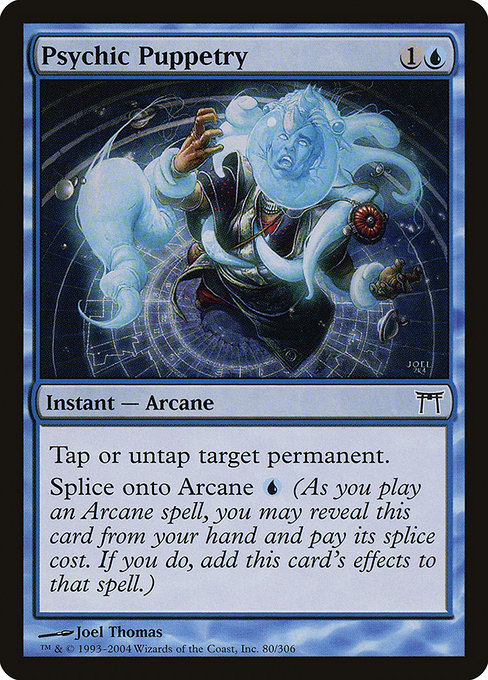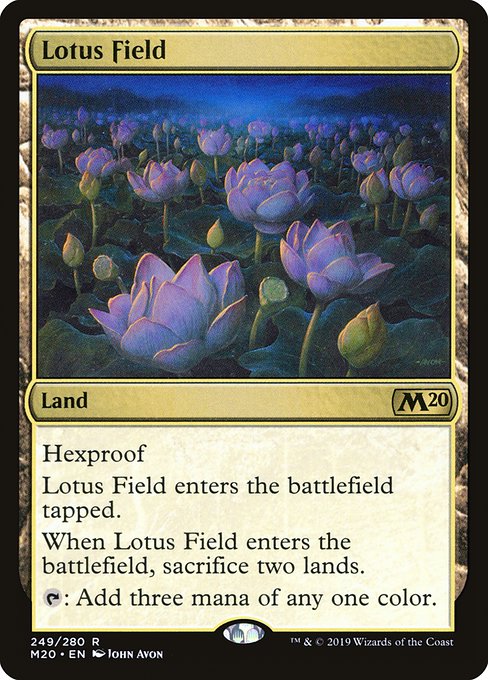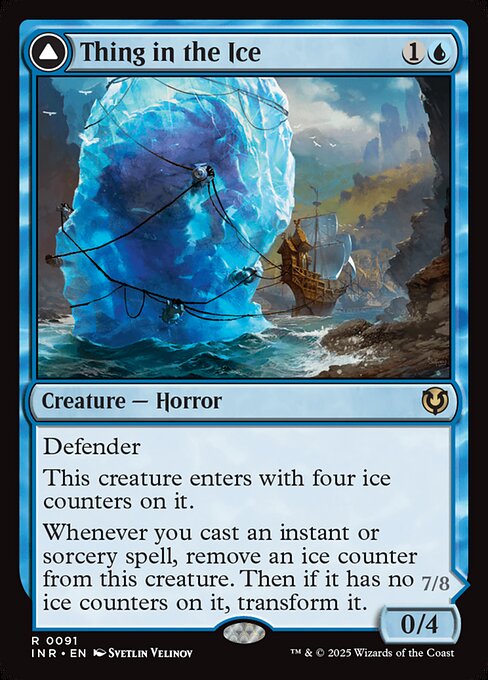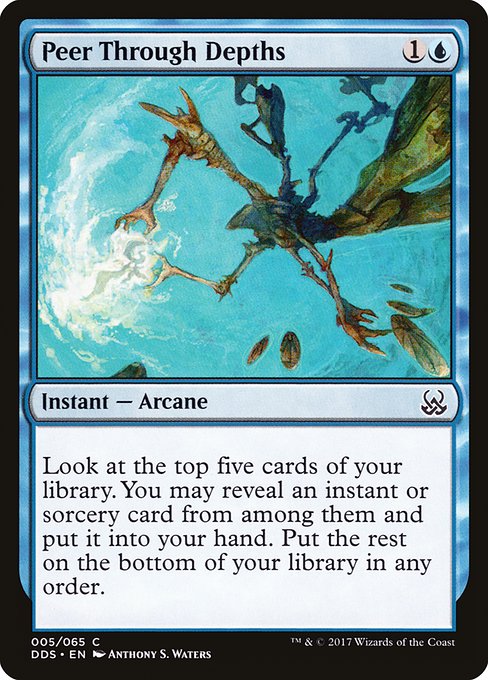Combo tends to be a “Marmite” strategy: you either love it, or hate it. No matter what your thoughts are on them, there’s no denying the skill, dedication, and practice needed to master many of the combo decks throughout Magic. In this second installment of Budget Solitaire Magic, we’ll be taking a look at one of my favourite combo decks in Modern: Twiddle Storm!
The deck gets its name from the card Twiddle, which taps or untaps a permanent. The main plan is to play Lotus Field, use Twiddle effects to generate an abundance of mana, cast a bunch of spells, and finally kill with Grapeshot.
Unlike its more mainstream cousin Gifts Storm (and Walls Combo in my last article), this combo is non-deterministic. This means that once you start going off it’s not guaranteed that you’ll win, but rather you need to leverage your skill (and some luck) to pull it off. This is a strangely robust and adaptable deck, given its typical glass cannon-esque playstyle. I’ll take you through the deck, explain how it works, and how best to pilot it.
Modern Twiddle Storm—$100/24 Tix
| Creatures (2) 2 Vizier of Tumbling Sands Spells (38) 4 Dream's Grip 4 Reach Through Mists 4 Serum Visions 4 Sleight of Hand 2 Twiddle 1 Echoing Truth 2 Grapeshot 4 Ideas Unbound 1 Merchant Scroll 4 Peer Through Depths 4 Psychic Puppetry 2 Shimmer of Possibility 2 Past in Flames | Lands (20) 12 Island 4 Lonely Sandbar 4 Lotus Field Sideboard (15) 2 Spell Pierce 2 Defense Grid 2 Echoing Truth 3 Thing in the Ice 1 Rebuild 2 Empty the Warrens 2 Precognition Field 1 Sphinx of the Final Word |
Twiddle Me This
First up are the aforementioned Twiddle effects. The main plan is to tap Lotus Field for three mana, then use one of these cards to untap it, generating at least one mana every time. You could say these are analogous to Pyretic Ritual and Desperate Ritual in Gifts Storm.
Hilariously, Twiddle is the weakest of these cards in the deck; Dream’s Grip is more versatile thanks to the entwine ability (despite the fact that you’ll almost never use it). Vizier of Tumbling Sands is in the deck for its cycling ability: an uncounterable Twiddle effect that replaces itself is phenomenal. It’s worth noting a few things about Vizier though: it cannot tap a permanent and it doesn’t add to your Storm count, but it can be an emergency blocker if necessary.

The Twiddler
The most important Twiddle effect in the deck is Psychic Puppetry. It may initially seem inefficient at two mana, but we’ll never be casting it for its converted mana cost. We’re looking to abuse its Splice onto Arcane ability to add the card’s effect to any Arcane spell for just a single blue mana. But what other Arcane Spells could we possibly be running?
Crack Arcane
We have three playsets of Arcane spells that help us dig through our deck. Reach Through Mists is the weakest, as it’s a below-average cantrip; but with Psychic Puppetry spliced onto it, it becomes a two mana Twiddle that replaces itself. Peer Through Depths really helps us to dig for specific spells to help us continue our combo. Ideas Unbound is another exceptional card draw spell; discarding three cards on your end step might seem like a huge downside, but more often than not the game will be over before you get there.
Road CanTripping
Next, we have the cantrips. Any blue combo deck in Modern worth its salt will run some number of them, as they dramatically increase consistency. Serum Visions is the ideal turn one play, allowing you to see three cards and set up for the next turn. Sleight of Hand is less effective in the early turns compared to Serum Visions, but being given a choice between two cards is much more potent during the combo turns, as it could mean the difference between whiffing and winning. Shimmer of Possibility is an honorary cantrip, despite its mana cost; being able to dig four cards deep towards a Psychic Puppetry or Lotus Field can massively improve the chances of comboing off in time.
Amazon Scroll™
The deck contains a single Merchant Scroll as a way to tutor for a number of different pieces. The main targets this can grab are Peer Through Depths, Psychic Puppetry, or the single copy of Echoing Truth, which is our only main deck interaction piece. This is there to bounce problematic permanents like Chalice of the Void or Thalia, Guardian of Thraben in game one.
Ready, Aim, Fire
Finally, we’ve got a pair of Grapeshot as our win conditions. We’re running a couple of Past in Flames to greatly increase the number of paths to victory, though we’re nowhere near as reliant on the graveyard as other Storm variants. While it’s much more difficult to chain twenty spells together without it, it’s certainly doable with a little luck. You can also get the job done in bursts: there’s nothing that says we can’t grapeshot for twelve on one turn, and eight in a turn or two. If you do fail to get the job done in one go, Past in Flames and one Twiddle effect should be enough to start the chain again.

I Hope This Joke Lands
Our mana base is extremely simple; aside from the playset of Lotus Field, there’s also four Lonely Sandbar. As we spend our first two turns setting up, we’re fine with sometimes playing a tapland; the benefit of running these is to make sure we can draw our way through any pockets of land we may hit while attempting to go off. Twelve Islands round out the lands, which helps minimize the impact Blood Moon has on us.
Putting a Damper on the Party
It’s worth noting that the single biggest enemy of this deck is Damping Sphere, as not only are we taxed for casting spells, but it makes our Lotus Field tap for a single colorless mana instead. Of all the problems to remove, priority must be put on this one. After that, the other hosers to watch out for are Thalia, Guardian of Thraben and Narset, Parter of Veils. As noted above, Blood Moon isn’t all that good against us; we’ll still need to remove it in order to combo off, but our high number of Islands let us set up around it with ease. Once we can combo off, we can bounce it with Echoing Truth and get to work.
Sideboard
Our sideboard is a fairly standard for a blue combo deck in Modern, but I’ll briefly explain the key pieces and the reason for their inclusion.
Empty the Warrens is the classic alternate win condition for Storm decks, as you can produce a huge number of tokens with a very low storm count. Aria of Flame is a newer inclusion from Modern Horizons, and it has consistently impressed me. Assuming your opponent is at eighteen life when you cast this (two fetches or one shock land will do this), you’ll need just seven spells to kill them, and they don’t need to be on the same turn. This hilariously also doubles as removal for Death’s Shadow in a pinch.
Spell Pierce is mostly in as cheap interaction to either protect your combo turn from opposing counterspells, or to stop a hate piece in the early game. If Damping Sphere wasn’t so detrimental to our game plan, this would likely be replaced by Mystical Dispute.
Defense Grid is to help us avoid counterspells on our turn, as the deck can be reasonably weak to them. Even if this gets countered, that’s one less to worry about! We’ll rarely care about interacting on our opponents’ turns, so this will be very one-sided.
Additional copies of Echoing Truth can be brought in to either bounce problematic permanents like Damping Sphere, or to help tempo out our opponents by forcing them to recast their threats. This often buys us just enough time to eke out a win. Rebuild is another option for bouncing hate pieces, particularly if you expect to bounce multiple artifacts (think Whirza decks). It also cycles, so drawing it while storming off is usually less painful than other options.
Precognition Field can replace Past in Flames in matchups where you expect a lot of graveyard hate. Being able to cast spells from the top of your deck really improves your chances of storming off when your graveyard is locked out.

Thing in the Ice is brought in against more creature-heavy matchups, and matches where you expect them to swap most or all of their removal for a lot of hate. Between this and the Twiddle effects you can transform into a tempo deck, effectively parrying any typical post-board anti-Storm plan. The Twiddle effects change role and become single-use Rishadan Ports and Icy Manipulators, and the game becomes more focused on disrupting their game plan. This works extremely effectively—not only are they slowing down to try and disrupt your original Storm strategy, but you can now freely cut them off mana at instant speed. Mix this with the pseudo-board wipe on Thing in the Ice, and Twiddle’s ability to tap down any emergency blockers that may face the monstrous sea Horror, and you’ve got a scary transformational post-board game. Also, one Past in Flames is usually kept in with this plan; if the game goes long, you can probably just storm off anyway.
Finally, Sphinx of the Final Word is our dedicated anti-control piece. It can’t be countered, it makes your spells uncounterable, and any removal your opponents left in is useless against it. It can also be a fast clock, can one-shot most planeswalkers, and can fight through a Celestial Colonnade. Unless they left in their wrath effects, most control opponents will have no answers for it.
I have seen some builds that have a transformational sideboard of three Kiki-Jiki, Mirror Breaker and four Deceiver Exarch, for a sort of Splinter Twin combo that attacks on a totally different axis. While it’s really sweet, I’m not convinced it’s worth the sideboard slots; it still needs Lotus Field for the red mana to combo off, which means it’s still susceptible to Damping Sphere. I’d recommend adding lands that tap for red mana if you want to add this to the deck.
Alternative Builds
As you can tell, this build is almost completely mono blue, though other colors can be added for many different reasons. Red is often added to give a better choice of sideboard cards (Abrade, Lightning Bolt, Fry); green is used to add Sylvan Scrying, Veil of Summer, and Nature’s Claim; and black is added for Wishclaw Talisman, Eliminate, Ad Nauseam, and Slaughter Pact. Each color gives the deck a unique feel, so experiment with what feels right to you!
Tips & Tricks
As I mentioned in my previous article, there’s no substitute for just picking up the deck and getting your reps in. I have however put together some insights, considerations, and niche plays to help you hit the ground running with Twiddle Storm.
Don’t be afraid to cast Ideas Unbound during the early turns to dig for the pieces you need. It might feel rough discarding three cards at the end of the turn, however not only will you be much closer to comboing off, but you can always flash those spells back later with Past in Flames.

You can splice Psychic Puppetry onto Arcane spells you flash back with Past in Flames! Splice onto Arcane can be applied to any Arcane spell, no matter what zone it’s cast from. This will surprise a lot of people; the first time you witness it, it feels so busted it’s almost like cheating!
Take your time! Some of your weaker matchups, like control variants, can take a long time to win the game. You can leverage this to your advantage by using your cantrips to sculpt a loaded hand. Once you spot an opening, you can unleash a barrage of spells, overload their counters, and try to brute force a win.
The Twiddle effects have several hidden modes! They can be used to tap your opponent’s creatures pre-combat, or tap their lands in their upkeep to keep them off their mana. You can also force an Aether Vial activation by tapping it, or even turn off a Trinisphere!
As with most combo decks, know your numbers! Plan your sequences carefully, and make sure that you can generate enough mana to keep going. For this reason it’s often correct to grab a Twiddle effect from Peer Through Depths or Sleight of Hand, as a lack of mana generation is usually what bottlenecks the combo.
If you think your opponent might have a soft counter, like Mana Leak or Mystical Dispute, lead into your combo with Vizier of Tumbling Sands. This will allow you to generate more mana without exposing yourself to a counter, and might give you enough to pay for it on the next spell.
Twiddle Storm is a fantastic, bizarre deck that can win out of absolutely nowhere. It’s possibly my favorite Modern deck, and will reward consistent practice with many spectacular wins, as seen here with this mulligan to TWO. If you like the idea of a deck where your opponents will stop to read every second card, that confuses most people and frustrates the rest, and that lets you turn combat tricks from Alpha into Dark Rituals, then this is the deck for you. Congratulations, you deserve each other. Weirdo.
Scott is an Irish content creator and head of the budget division of the Izzet League. His primary focuses are Pioneer, Modern, and Pauper, and he can be found storming off on Twitch and Youtube.

